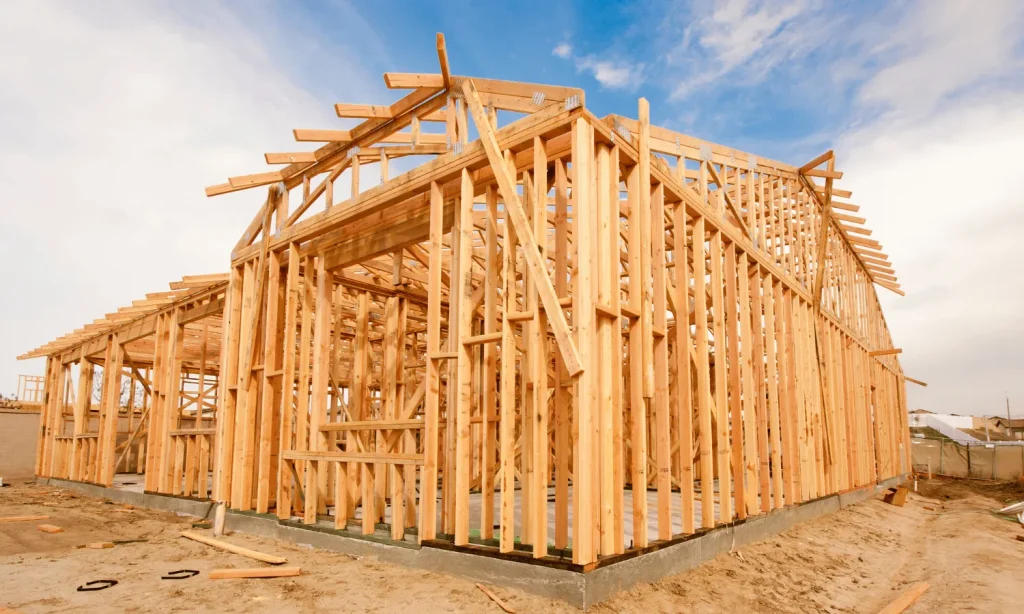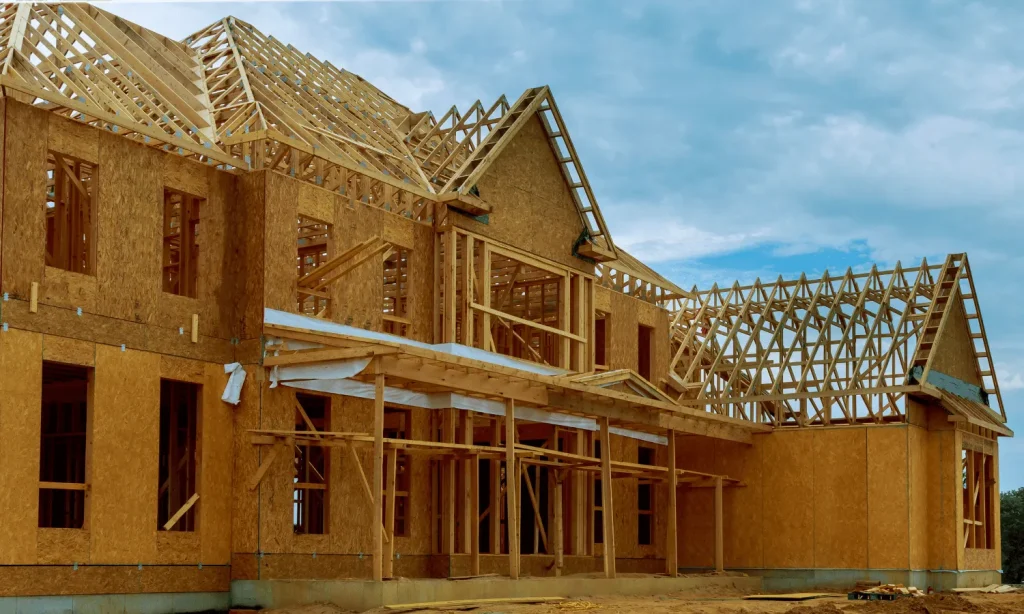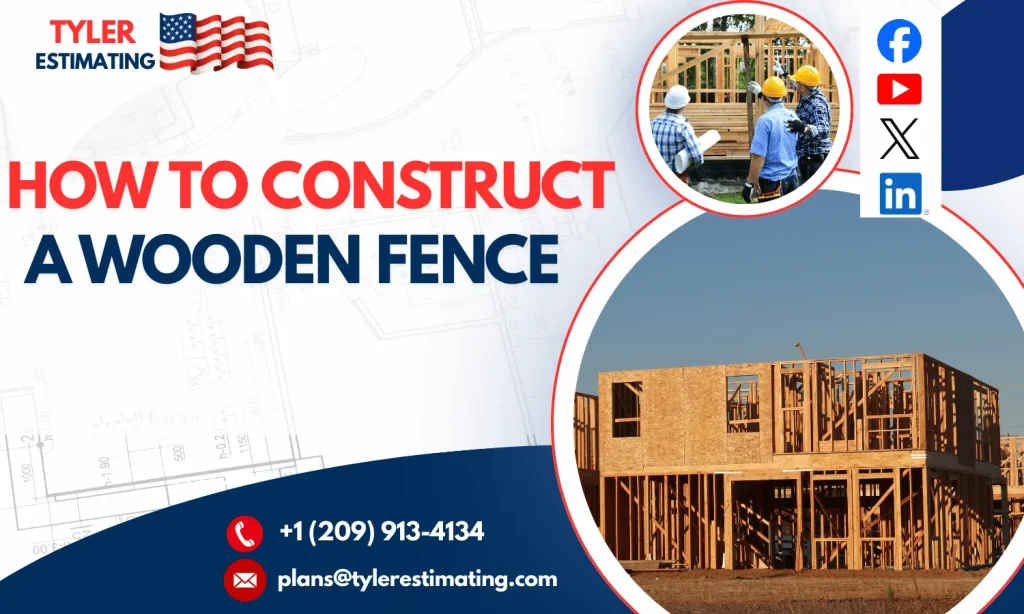A wooden fence is a functional and aesthetic project that is one of the most fulfilling projects for the homeowner. An attractive fence has numerous advantages, creating more privacy, increased safety, property marking, and curb appeal. The reason why wooden fences have been particularly popular is related to their affordability, flexibility, and ability to adapt to any type of style, such as a conventional picket fence and high privacy walls. In comparison to other materials, the appearance of wood is natural and suits outdoor areas, and could be modified with paint, stain, or decorative elements.
The construction of a fence demands proper planning, measurements, and the use of the correct tools to make this fence durable. Setting posts to fixing rails and boards, each of them is important in the final construction. A wooden fence can be a well-built piece of healthy add-on to your yard, with a lot of planning and care, and a lot of longevity, as well as beauty.
Plan and Prepare
You must think things through before you begin to cut boards or drill holes.

Defend Property Lines: You should know the location of your property boundaries, as it will help you prevent any disputes with your neighbors. Marginal Land Survey might be necessary.
Check Local Laws: Some localities demand permits to build fences. Height limits or design regulations may also apply based on your neighborhood.
Select the Fence Style: Select either a privacy, picket, or ornamental fence. Privacy fences tend to be taller than picket fences, which are shorter and more decorative.
Measure the Area: Determining the length of the fence line requires the use of a measuring tape. Divide the number by the distance between fence panels or pickets to be familiar with the quantity of posts and boards required.
Gather Materials and Tools
To construct a wooden fence, you will require the following materials:
- Posts made of pressure-treated wood (4×4 or 6×6).
- Rails (2×4)
- Fence boards or pickets
- Post setting concrete mix.
- Nails or exterior-grade screws.
- Gravel for drainage
- Finishing stain, paint, or sealant.
Essential tools include:
- Post-hole digger or auger
- Shovel
- Level
- Hammer or drill
- Measuring tape
- String line and stakes
- Saw (hand saw or circular saw)
Before purchasing, many homeowners and contractors use lumber takeoffs services to determine the exact quantity of wood needed. This ensures accuracy in ordering posts, rails, and boards while preventing unnecessary waste and controlling overall project costs.
Mark the Fence Line
- Post a stake on the drive at every corner of the line of fence.
- Use a tie string across the stakes to form a guideline.
- Indicate the position of each post on the line, normally 6-8 feet, according to your type of fence design.
This is done to make sure that your fence will be straight and spaced evenly.
Dig and Set Fence Posts
Well-installed posts are the determining strength of your fence.
Dig post holes: The holes are supposed to be a third of the height of the fence. As an example, to dig a 6-foot fence, at least 2 feet are to be dug. The typical hole diameter is approximately 10 -12 inches.
Add gravel: Add 4-6 inches of gravel at the base of every hole to enhance drainage.
Install concrete posts: After this, set the concrete post in the concrete. It is necessary to pour the concrete mix into the post in the middle of the hole. Check the level of the post to ensure that it is vertical.
Let post cure: The concrete must be allowed to dry at least 24 hours before the addition of the rails or boards.
Attach Rails
- Rails are used as the horizontal supports that enable the posts to hold the fence boards.
- A 6-foot fence usually has three rails such as top, middle, and bottom.
- Cut rails to fit between posts.
- Install exterior-grade screws or brackets to secure the rails and make them flat.
It is advisable to keep the bottom rail no less than 6 inches high so that the boards are not spoiled by moisture.
Install Fence Boards or Pickets
This is when you give your fence the last touch.
Choose Spacing: In the case of a privacy fence, the boards are installed in tight spacing. In the case of picket fences, leave a slight space (13 inches) between boards.
Begin with one Corner: This is done by nailing or screwing the first board to the post.
Check Alignment: Hold boards in line with a level as you follow the line of the fences.
Keep Adding Boards: It should be done in a systematic order towards one end and the other side with the same amount of spacing.
Add a Gate (Optional)
In case you need the fence to be opened, put in place a gate.
Selection of Position: Gates are typically erected at driveways or paths.
Frame the Gate: Frame the gate with 2x4s to make a strong rectangular frame. To be more powerful, put a diagonal brace.
Install Gate Boards: Screw pickets or boards to the frame to fit the rest of the fence.
Install hinges and latch: Attach the gate to the posts using heavy-duty hinges and install a latch.
Finish and Protect the Fence
Wood is strong, but requires resistance against the weather.
- Sand Rough Edges: Round off all sharp or rough sides.
- Sealant or Paint: It is recommended to use exterior-grade wood stain, paint, or sealant to withstand the effects of moisture, UV rays, and insects.
- General Repair: Sealant should be reapplied every 2-3 years, and broken boards should be replaced.
Tips for a Successful Wooden Fence Project

- It is always best to purchase a bit more wood to cover up errors or broken sections.
- Posts and rails should be made of pressure-treated lumber to avoid rot.
- Before a bit of wood is cut, check it twice.
- When constructing on uneven ground, it would be better to step the fence or racking, which will follow the slope.
Why Build a Wooden Fence?
Wood fences are still among the most preferred options by homeowners because they are:
Affordability: Less expensive than wrought iron or vinyl fencing.
Customizability: It is paintable, stainable, and can be done in different styles.
Aesthetics: Natural wood works well with the scenery.
Repairability: It is possible to replace individual boards without destroying the whole fence.
A wooden fence can be used properly and may last 1520 years or more.
Conclusion
A wooden fence construction is a project and involves practicality as well as creativity. Planning, measuring, installing posts, and completing the boards, among others, are all important in constructing a strong, beautiful, and durable fence. Although it takes time and it needs attention to details, it will end up giving your home privacy, security, and beauty. The difference between constructing a simple picket fence and installing a high privacy fence is that by following the right process, you will have a strong wooden fence that will last for years to come.




